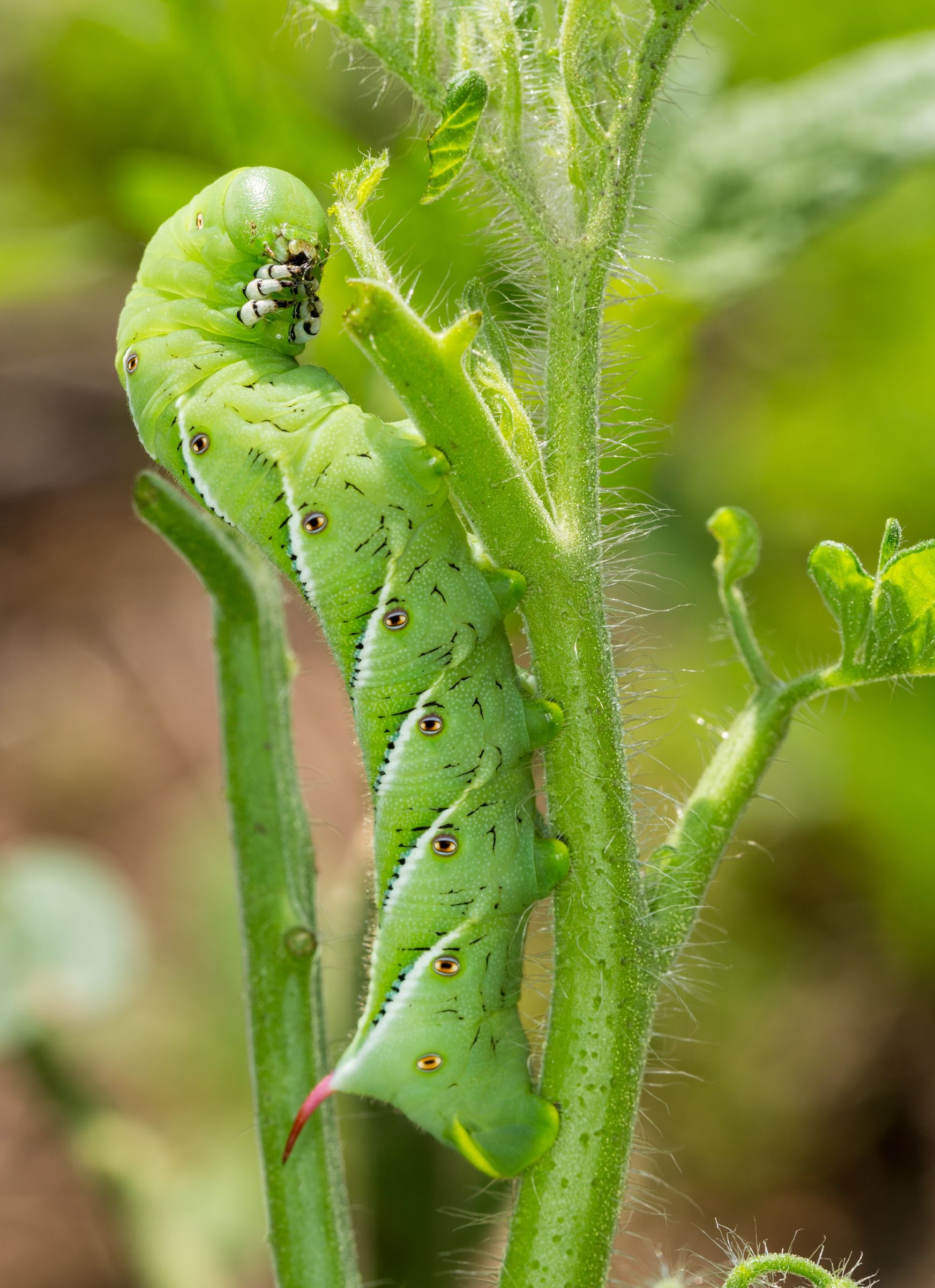Controlling grapeleaf skeletonizers, cabbage loopers, tomato hornworms and other caterpillar pests.
If you grow it, they will come…Organic gardening is very rewarding, but sometimes it seems that I have simply planted a buffet for pests. Since I do not use harsh chemicals in my garden a certain amount of pest damage is to be expected. But when the damage begins to “eat” into my profits and the food that I want to set on the table for my family, here is how I take action.
1. Observe. The first step is to observe the garden to see what exactly is causing the problem and how much damage is being done. While some gardeners have no tolerance for holes in leaves, I see things differently. When a garden pest eats a hole in a leaf, it sends signals to the plant to step up its defenses. These defenses are often in the form of phytonutrients, which are very healthy for humans. So, when I see a hole in my kale or cabbage leaf, I am undaunted, knowing that the leaf probably contains more nutrients than others and is healthier to eat. I also know that the leaf is safe to eat and free of chemicals that deter caterpillars, and would also be harmful to me.
2. Take limited action. If, however, my plant leaves are starting to look more like lace than greenery, it may be time to take measures to deter the pests. My first plan of attack is to pick the caterpillars off of my plants manually. Be sure to wear gloves when doing so, as some caterpillars have hairs that can irritate the skin. They can be difficult to find, but holes in the leaves and black dots of frass (caterpillar poop) give their location away. Throw the caterpillars in a bucket of soapy water or throw them to your chickens. Additionally, a spray of soapy water can be helpful. Use a mild dish detergent, such as Ivory or Dawn. To ramp up your efforts, add some neem oil to the soapy water, or any other irritant. If you have basil, oregano, garlic, onions or hot peppers in your garden, you can use them to create a pesticide spray. Whirl any combination of them in a food processor with some water, strain, and add the liquid to the soapy water. Direct the spray right to the pests, as it works by clogging and irritating their airways.
3. Use a natural pesticide.
Natural gardening can be challenging, and without the use of harsh chemicals, pests can be a real problem. As an organic gardener, I do not rush to use pesticide products of any sort.However, sometimes an organic product is helpful, perhaps even necessary, to save a crop from destruction.
Occasionally, when pests get ahead of manual picking and home remedies. For example, every year pretty purple moths invade my grapevines, leaving behind hundreds of voracious larvae. These are grapeleaf skeletonizers, and they can quickly decimate my grapes, leaving no greenery behind. No leaves=small grapes, so action is necessary. In this case, I turn to a natural product: Bt by Safer Brands. If is safe, effective, and it saves my grape harvest every year!
Bt (Bacillus thuringiensis) is a naturally occurring bacterium that is toxic to caterpillars. It is considered to be safe for humans, particularly in the dust form which is easily washed off prior to ingestion of the fruit or vegetable that has been treated. Safer Bt Dust is my go-to product. The dust is easily applied by squeezing the bottle, which sends a puff of dust directed to the area of infestation. Safer Brand products are OMRI certified, and I have found them to be very effective in my garden against pests, without damage to bees or other beneficial insects. And I really appreciate that I can use the products close to harvest time because they are not damaging to humans.


